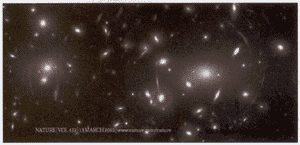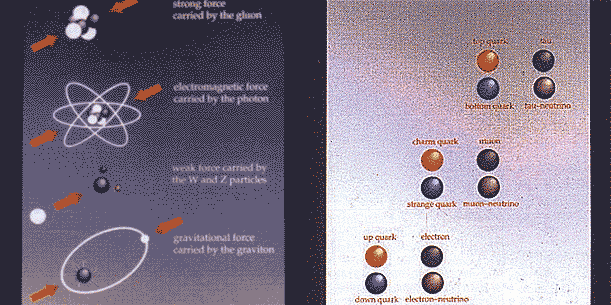| 2003 |

|
YEAR BOOK |
Dublin Institute for Advanced Studies
|
String Theory at the School of Theoretical Physics
|

What many of us are hoping for is the discovery of supersymmetry in particle physics. Particles come in two different types. The fermionic type, which includes electrons and nuclear particles, insists on individual difference - no two particles can share all features. In particular, two electrons refuse to occupy the same space, which explains the hardness of matter. By contrast, the bosonic type is eminently sociable. An example are photons in a laser beam - they all want to be alike. This is why laser beams are so sharp.
When you rotate bosons and fermions, you find that they act out a famous mathematical controversy of the 19th century. Dublin born William Rowan Hamilton (1805-1865) described rotations with the help of his quaternions; Hermann Grassmann (1809-1877) invented vector calculus for the same purpose. Opposing camps fought a kind of war on this issue until mathematicians created representation theory as a unifying point of view. Eamon De Valera may have loved quaternions as much as he loved the Irish language, if it is true that he scratched their equations on his cell wall on the eve of his announced execution. But most practically-minded people found them too complicated, so vectors seemed to have the upper hand. Today, at least the mathematical war is settled - rotation of electrons is described by quaternions, rotation of photons by vectors.
Fermions occur as the constituents of matter, notably electrons and quarks. Bosons mediate interactions: photons the electromagnetic one, gluons the strong, and W and Z the weak interaction. The undetected quanta of gravity, called gravitons, must also be bosons. In a sense bosons and fermions seem to belong to different worlds. In the standard model of basic physics they are introduced as entirely separate building blocks.

More encouragement comes from astrophysics and cosmology. We now know that only a few percent of the matter in the universe is of the conventional type. About 23% is dark matter, 73% is dark energy, and only 4% is ordinary matter. Today, advances in cosmology and particle physics go hand-in-hand, and the two communities of researchers have frequent meetings. Many string theorists hoped that they were on the way to the final theory of everything, but this new kind of matter may well announce a new layer of nature.
In any case, the study of the fundamental structure of the universe has thrown up interesting puzzles, some of which have already been resolved. Inflation was originally very speculative, but is now commonly accepted. Higher dimensions have moved from the domain of fiction to the daily routine of sober theoreticians. String theory prefers ten dimensions whereas supersymmetric gravity prefers eleven. A higher, unifying perspective is now under construction. The most evident question is: Where are the extra dimensions? Do we live on a three-dimensional brane which extends in a higher-dimensional space? Or do we need to invent a new kind of geometry? Dublin, and DIAS in particular, take part in these investigations. We form a well-known node in the international net of researchers, and help to educate a new generation to be at the forefront of research in the exciting years to come. Ireland really should join CERN!
Contact: Prof. T. C. Dorlas; School of Theoretical Physics; Dublin Institute for Advanced Studies,10 Burlington Road, Dublin 4.
E-mail: [email protected]